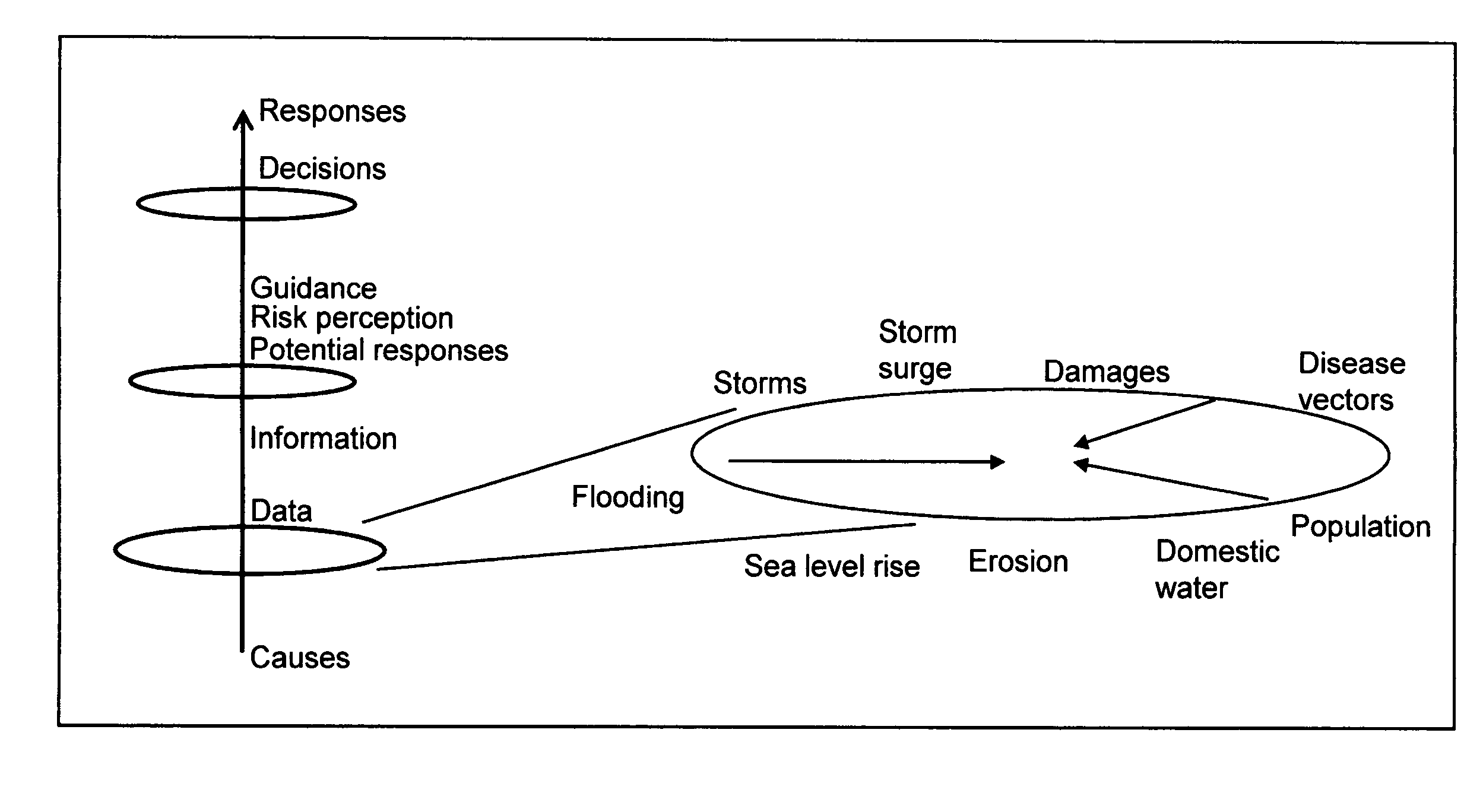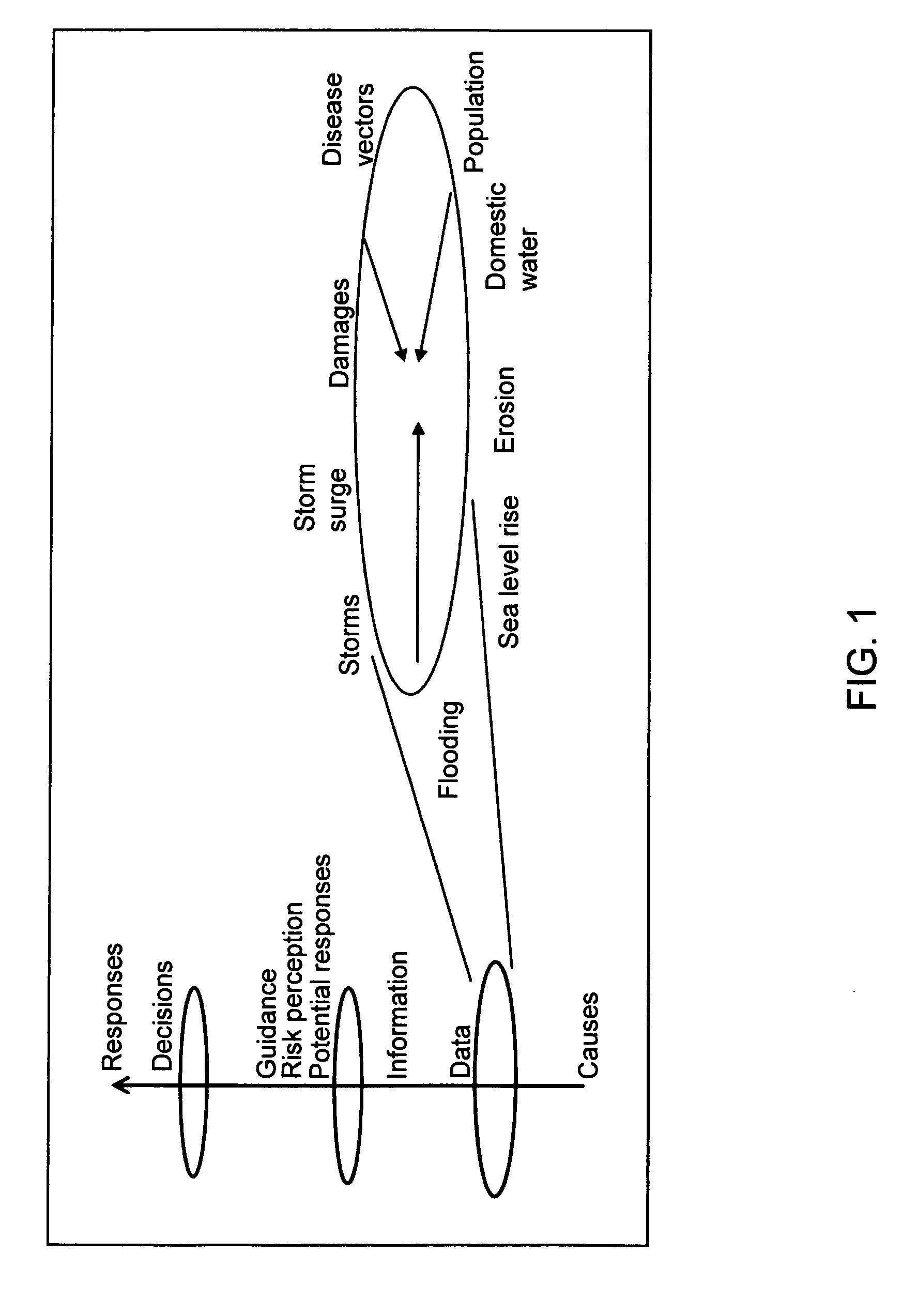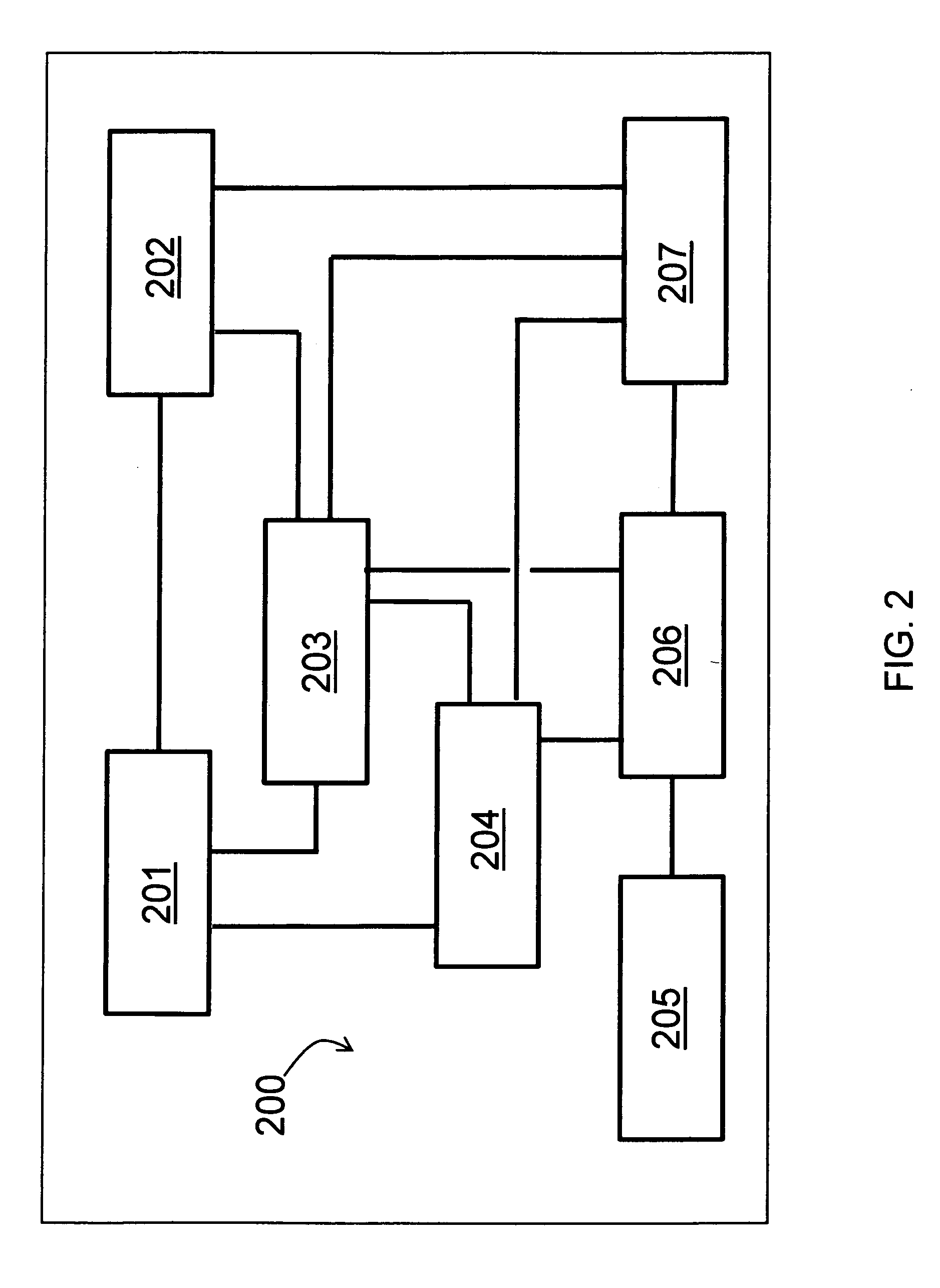Automated research systems and methods for researching systems
a research system and research system technology, applied in the field of automatic research systems and methods for studying complex systems, can solve the problems of difficult non-deterministic polynomial time, high volume research environment, complex environment, etc., and achieve the effect of improving understanding of growth and stability functions and better controlling dynamic systems
- Summary
- Abstract
- Description
- Claims
- Application Information
AI Technical Summary
Benefits of technology
Problems solved by technology
Method used
Image
Examples
example 1
[0224]Referring to FIG. 3, after selection of an EO and execution by the ExpDir module a Knowledge Library (KL) element (which can be an element of a knowledge base (KB)) and starting instruction set (SIS), which can have elements of a User Specified Goal (USG) starting instruction, are used by a Starting Set Controller (SSC) and Experimental Design Sequencer (EDS) to initiate a first Experiment Sequence (#1). Results of the first Experiment #1, after (i) passing into and through the data selection / filtering and data analysis modules of a Data Analysis Engine (DAE), and (ii) passing through the Biomodel Assembly and Simulation steps, are (iii) used together with the KL in the Congruence Module where (iv) an information gap is derived and passed to an Automated Experimental Designer Module (EDM) (that can be the Experiment Chooser module with a random creative design component and / or a decision rule design component (e.g., which builds a new EO from closely associated techniques of p...
example 2
Simple 2-D Matrix System
[0288][System SS-1, Containing Component A and Component B]. Take a Simple System of at Least Two Interacting Subsystems A and B.
[0289]Referring to FIG. 5A-5D, corresponding to an experiment measured at three time steps and at an end point, respectively, for a simple system of two components, A and B, an observation of system function may show that the two components migrate into the inner box and remaining within that region in a balanced, ongoing association (which, for example, in the case of a biological cellular system, could correspond to two biological molecular constituents migrating into and remaining within the nucleus of the cell). Repeated observation of system behavior through multiple time points, from initial conditions to an end point, could establish that this migration and continued association within a bounded sub-region of the system is a rule of normal system function for this studied system, SS-AB. A statistical distribution of positions...
example 3
[0309]Embodiments of the invention can provide a method to gain insight about molecular network interactions and metabolic response patterns associated with a toxic dose of Compound X to a biological sample. Data mining (such as with the SLAM algorithm in the GeneLinker Platinum™ software, Improved Outcome Software Inc., Kingston, Ontario, Canada) can be used to detect biomarkers and reverse engineering methodologies (such as the Integrated Bayesian inference System (IBIS) and reverse-engineering algorithm-linear (REAL) methods developed by Biosystemix, Kingston, Ontario) are used to gain insight into biological network interactions. The method then provides for:
[0310]1. Building further insight on potential toxicity by uncovering hidden relationships in “pan-omic” data sets and unique responses that correlate with treatment;
[0311]2. Identifying biomarkers of key outcomes from treatment of Compound X; and
[0312]3. Inferring the gene regulatory network imputed in and allowing ...
PUM
 Login to View More
Login to View More Abstract
Description
Claims
Application Information
 Login to View More
Login to View More - R&D
- Intellectual Property
- Life Sciences
- Materials
- Tech Scout
- Unparalleled Data Quality
- Higher Quality Content
- 60% Fewer Hallucinations
Browse by: Latest US Patents, China's latest patents, Technical Efficacy Thesaurus, Application Domain, Technology Topic, Popular Technical Reports.
© 2025 PatSnap. All rights reserved.Legal|Privacy policy|Modern Slavery Act Transparency Statement|Sitemap|About US| Contact US: help@patsnap.com



